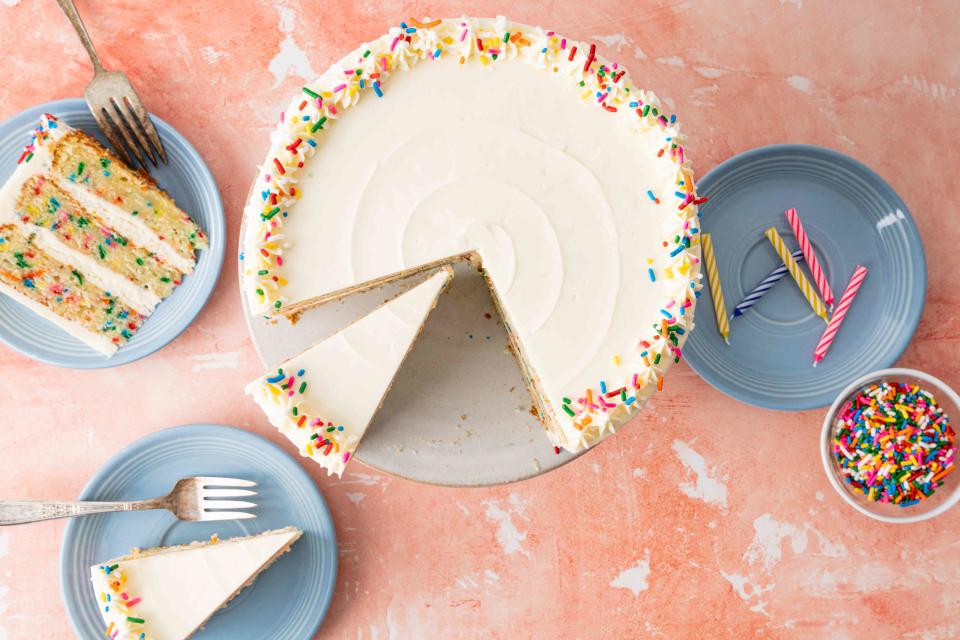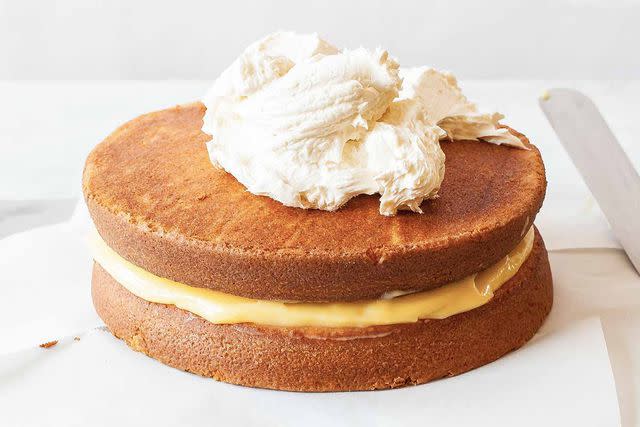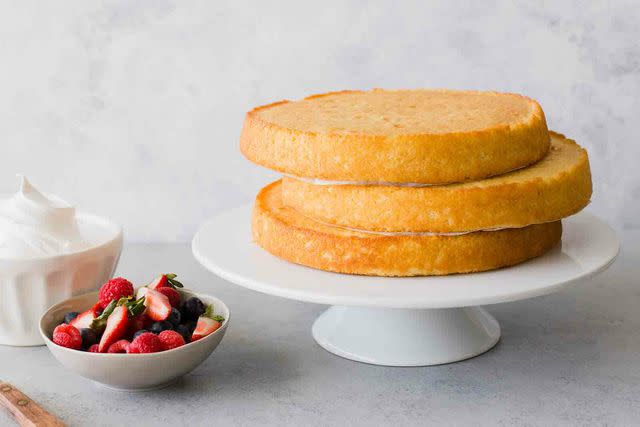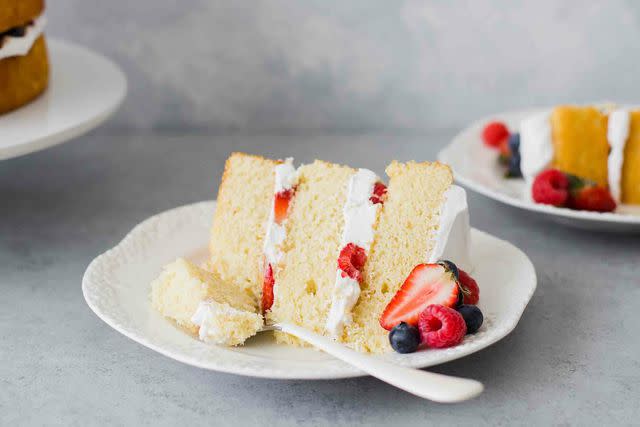What's The Difference Between Yellow, White, and Vanilla Cake?
Before you make a birthday baking decision, learn what makes a yellow cake a yellow cake, all about white cake, and the ins and outs of vanilla cake.

Simply Recipes / Mark Beahm
Whether it's for a birthday, celebration, or quenching a sweet tooth, vanilla cake is a crowd-pleaser. If you visit the cake mix section of the baking aisle, you'll see it's not as simple as grabbing a box of vanilla. You’ll likely encounter “Classic White,” “Butter Golden,” “French Vanilla,” and everything in between.
So what’s the difference between yellow, white, and vanilla cake? And how do you decide which one to pick? We’re here to help.

Simply Recipes / Sally Vargas
What Is Yellow Cake?
Yellow cake doesn’t get its golden hue from food dyes but from the vibrant color of egg yolks. This cake uses whole eggs rather than separated egg whites, which makes the cake rich and tender. The fat in yellow cake is usually all butter (rather than a combo of butter and shortening or oil), which also enhances the sunny shade.
Yellow cakes typically call for all-purpose flour, which gives the batter a thicker, denser structure. The extra fat added from the egg yolks also contributes to the cake’s texture, making it moister and a bit denser than a white cake. Yolks give the cake a mild custard flavor which holds up exceptionally well to chocolate or cream cheese frostings.
If the cake doesn’t specify if it’s white or yellow, look at the ingredient list to see if it calls for whole eggs or just egg whites. That's a reliable way of distinguishing yellow and white cakes.
Try These Yellow Cake Recipes:

Simply Recipes / Cindy Rahe
What Is White Cake?
Pure white and cloud-like, white cake can be both a sophisticated, layered wedding cake or a perfect blank canvas for a funfetti cake.
Unlike yellow cake, white cake typically uses all egg whites, no yolks. This means less fat and more sponginess as well as a lighter hue. White cake recipes might also call for a combination of butter and shortening to keep the color bright white.
White cake traditionally calls for cake flour rather than all-purpose, which makes for a thinner batter and a lighter cake. Cake flour is bleached for a pure white color and has a lower protein content, which reduces the amount of gluten that forms inside. Using cake flour, you’ll achieve a good rise from the cake and a very light, fine crumb in the structure. This makes white cake a good pairing for vanilla frosting and delicate whipped frostings.
Try These White Cake Recipes:

Simply Recipes / Cindy Rahe
What About Vanilla Cake?
Both white and yellow cakes are vanilla cakes—assuming they contain vanilla extract or paste. Vanilla cake is a catch-all term for sponge cakes that have a vanilla flavor.
French vanilla cake is also a vanilla cake, but with a more distinct flavor. The “French” part of the name doesn’t signify where the vanilla came from, as it does with Madagascar vanilla or Tahitian vanilla. It's actually a reference to vanilla custard. French vanilla cake mimics a custard flavor by including egg yolks in the batter, making it a rich yellow cake.
Try These Vanilla Cake Recipes:
A version of this article originally appeared on MyRecipes.com

